Orchid Roots: How To Care For Aerial Orchid Roots To Keep Plants Healthy
Does your orchid have exposed roots growing out the top of the pot? Find out what to do with aerial orchid roots – and whether you should trim them.
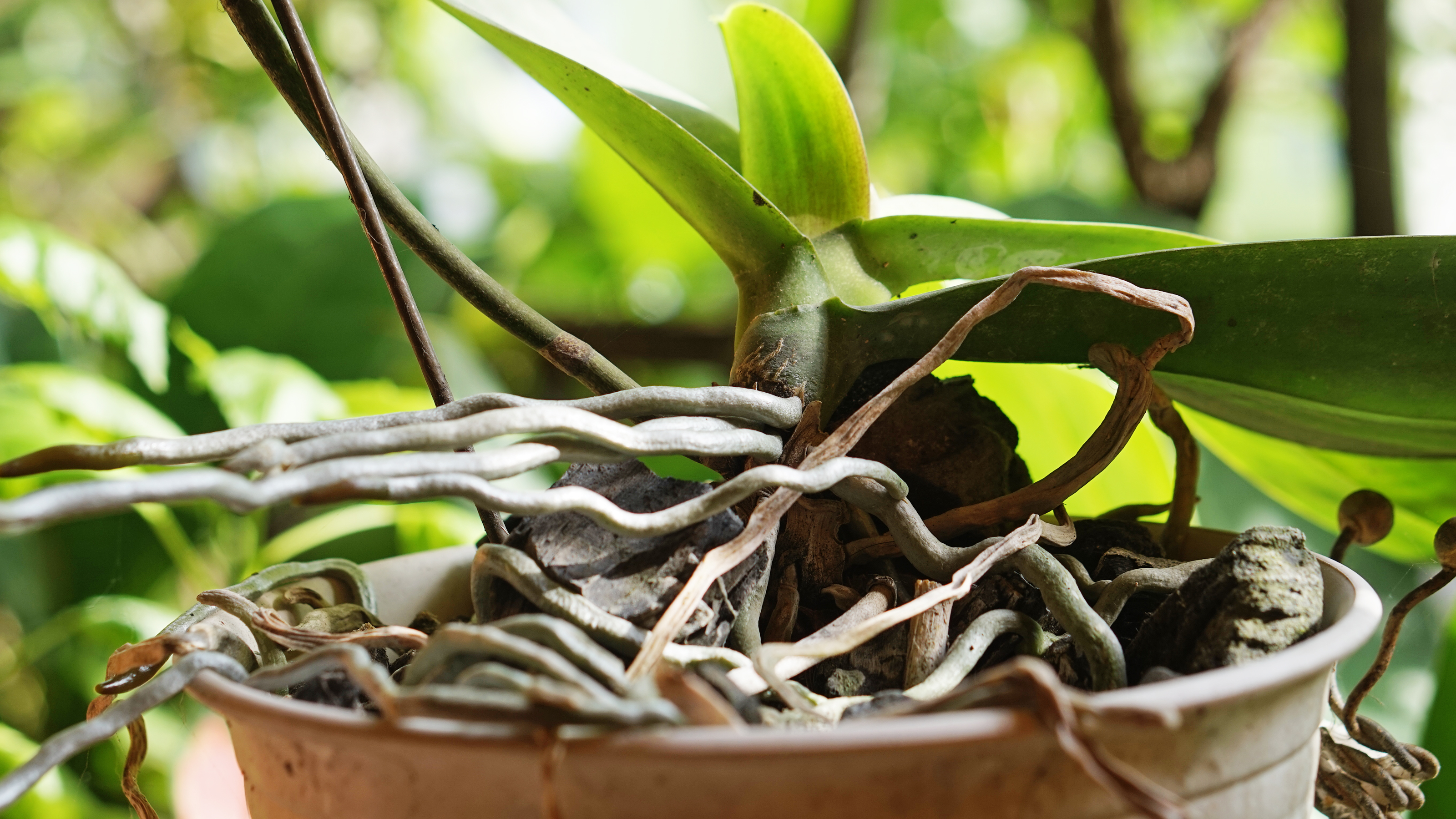
Amy Draiss
Exposed orchid roots are a completely normal feature of these uniquely beautiful plants, and tending to them is an important aspect of orchid care.
Aerial orchid roots are most likely to occur in epiphytes species. In their native setting, epiphytes grow on other plants, such as on the branches or trunks of trees.
Unlike parasitic plants, orchids don’t hurt the tree because the humid air and the surrounding environment provide all the plant’s necessary water and nutrients.
In this article, we will explore the beneficial nature of aerial orchid roots and their care in greater detail.
Why Orchid Roots Appear
Though the development of aerial roots is most common in Phalaenopsis orchids, other different types of orchids may also exhibit this unique pattern of growth.
Orchid roots in air are used to draw both moisture and nutrients from the surrounding environment. This is achieved through the formation of dense root clusters above the surface of the plant’s medium.
In the wild, these structures are considered essential to the plant’s survival. However, where conditions are ideal, aerial roots will also grow indoors.
Gardening tips, videos, info and more delivered right to your inbox!
Sign up for the Gardening Know How newsletter today and receive a free copy of our e-book "How to Grow Delicious Tomatoes".
Healthy orchid roots should appear plump and have a glossy white or green appearance.
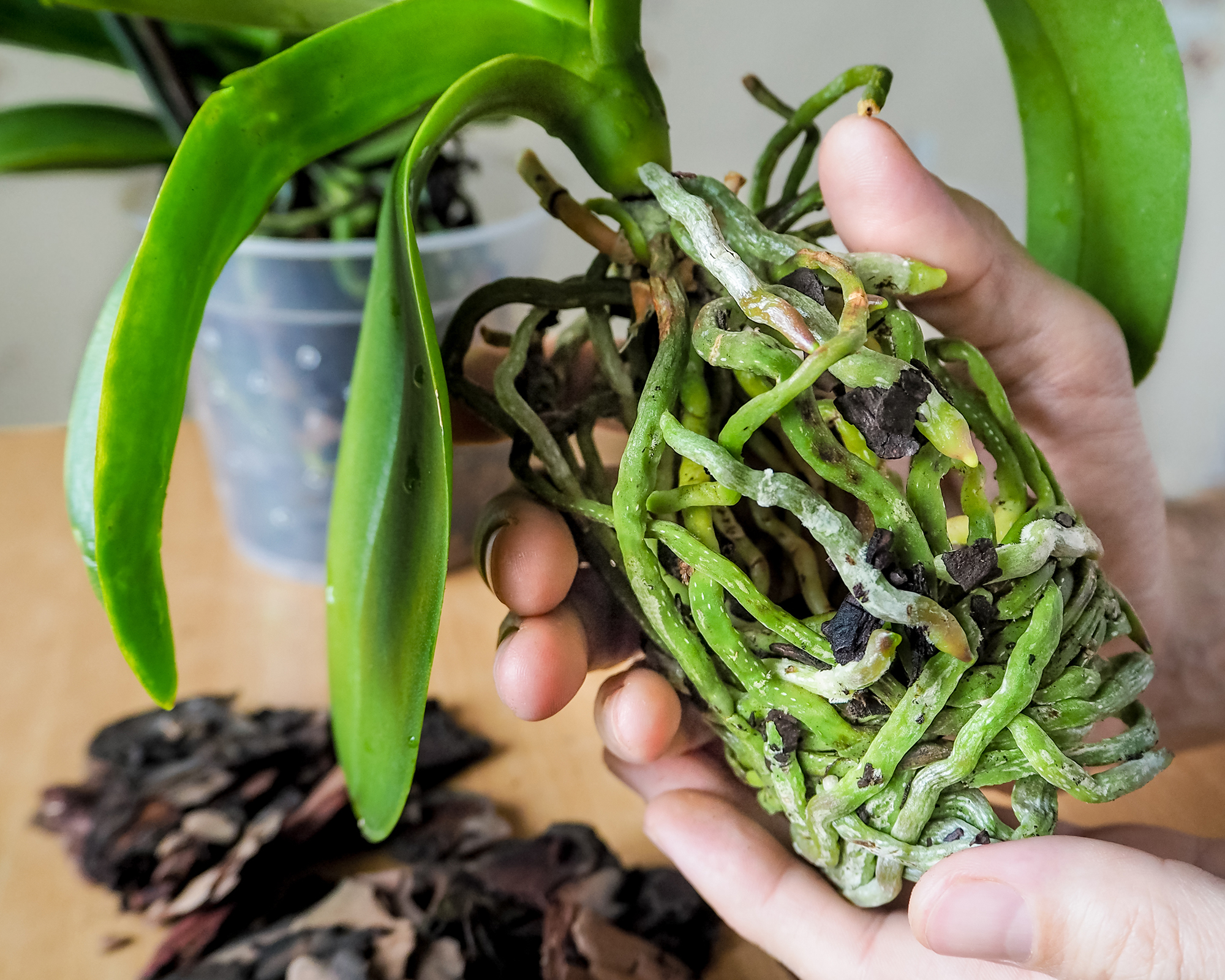
How To Treat Aerial Orchid Roots
Aerial orchid roots should be left intact, provided that they are healthy. As exposure to air is needed as a part of their primary function, surface roots should never be buried or forced below the surface of the growing medium.
Root structures should never be removed from the plant unless they have died back naturally or have become damaged in some way. Doing so may cause the plant to become stressed, ultimately resulting in the loss of vigor.
Continued care for aerial roots aligns closely with overall orchid maintenance. This includes regular misting as a means of watering orchid plants, as well as careful handling.
Do You Ever Need to Remove Orchid Roots?
Unhealthy orchid roots can be trimmed from the plant, as needed. Root rot is one of the more common orchid problems, and affected roots should be removed.
Dead air roots are often those that have lost their color or have taken on a dried, shriveled appearance.
The loss of aerial growth most frequently occurs due to inadequate levels of humidity or moisture within the air.
Dried or damaged roots are best trimmed from the plant after it has finished blooming. A sterile garden knife or pair of secateurs are considered the best tools, allowing for clean, precise cuts.
Be sure to sanitize your cutting tool by wiping the blades with rubbing alcohol or a solution of water and bleach before you begin.
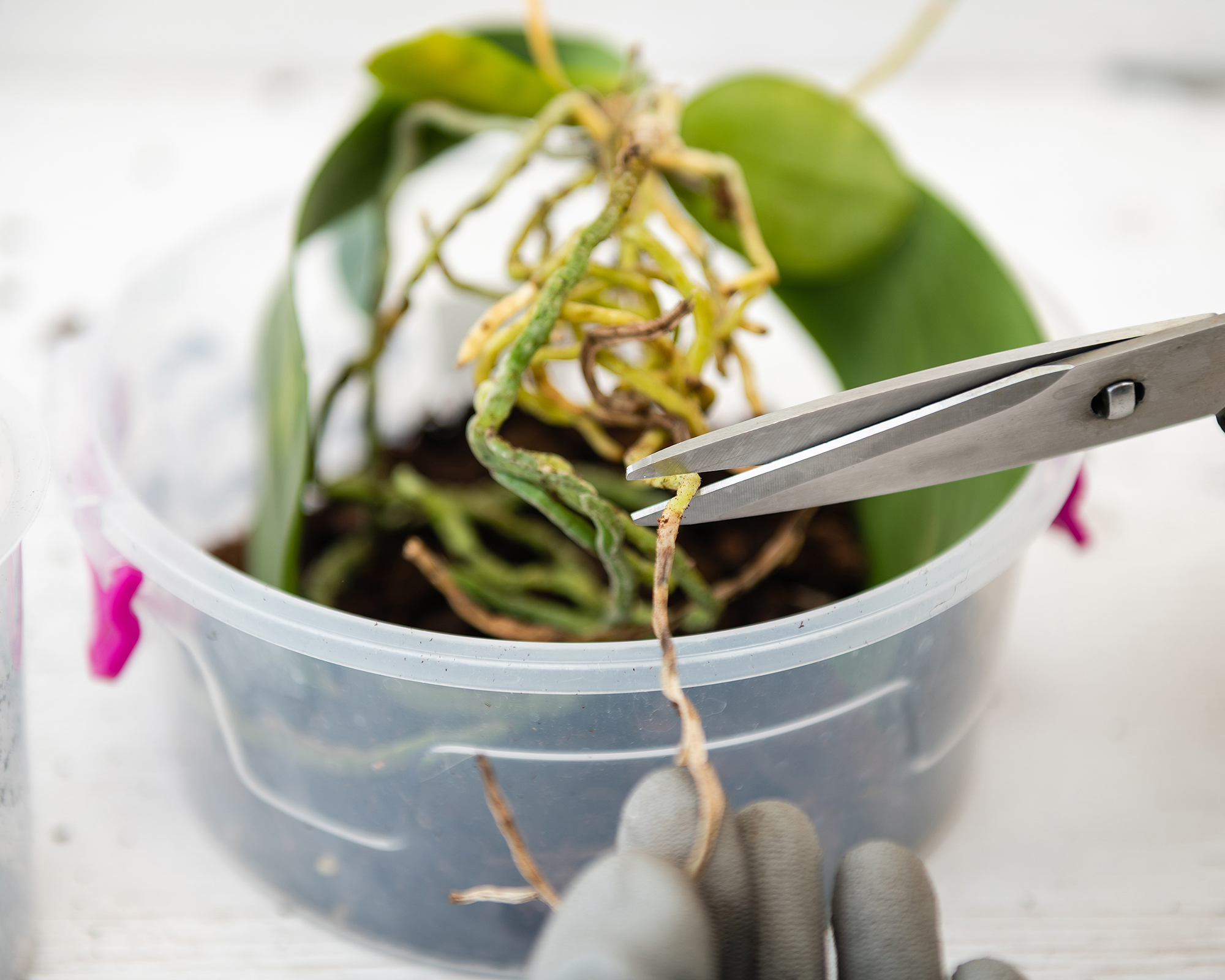
How To Repot Orchids With Aerial Roots
Though the thought of repotting orchids with pronounced aerial roots may seem intimidating, the process is relatively simple. However, the plants will require some special preparation in order to ensure success as it is repotted.
First, growers should consider hydration. Submerging pots into clean, tepid water will greatly prevent water-related stress.
A brief soak will also help to loosen the roots from the growing media, making for easier removal. The orchid can then be gently shaken from its container.
Trimming orchid roots should be avoided, aside from those that have browned or shriveled.
Plants can then be placed into new pots that have been filled with a potting mix suitable for orchids.
Check the size and type of container. If the plant seems a little too snug, move the orchid into a larger pot, because overcrowded roots may escape and look for space to grow above the surface of the soil.
Aerial roots should be positioned atop the pot so their growth resumes naturally.
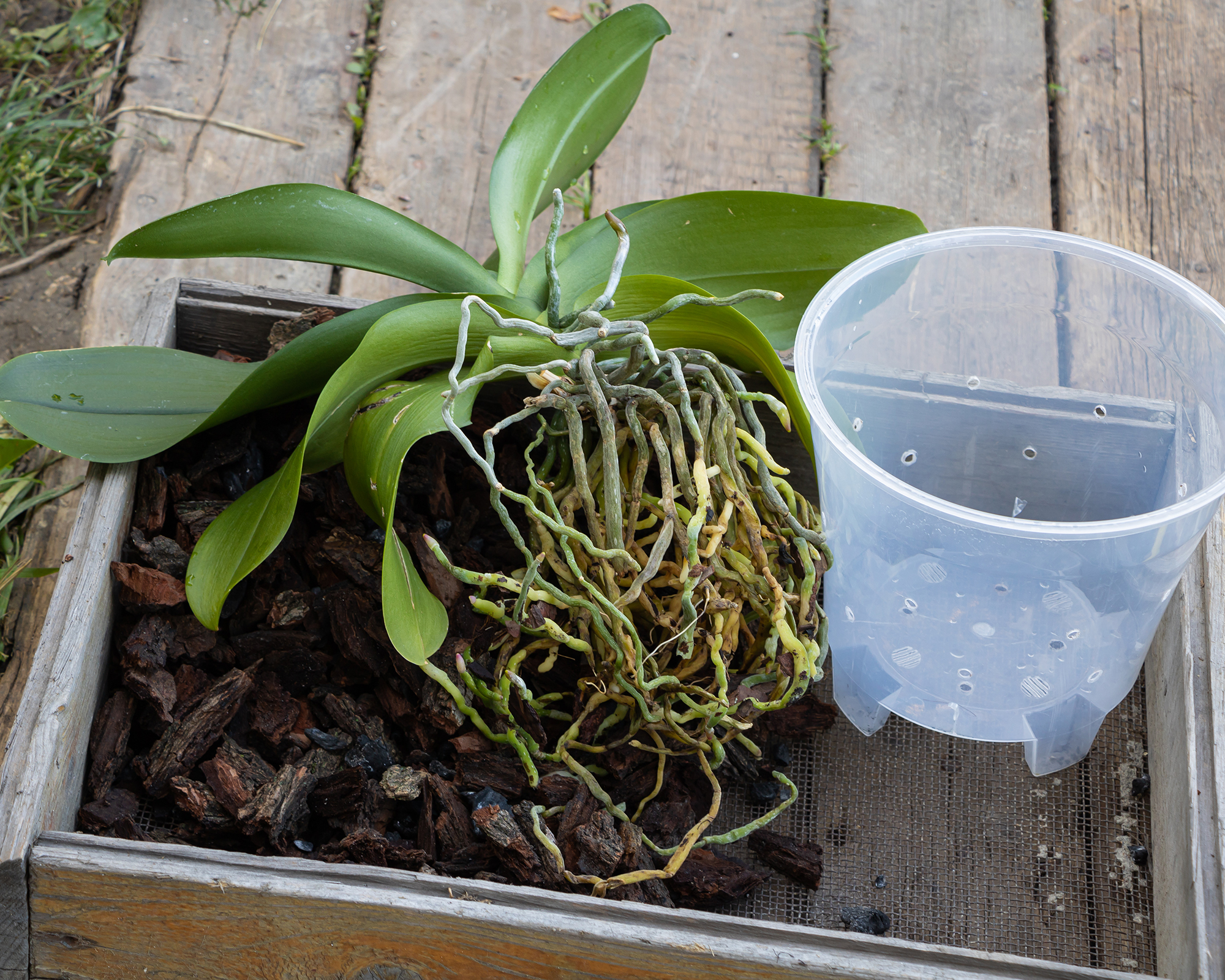
Frequently Asked Questions
Can you put orchid aerial roots in water?
Air roots are known for their ability to draw moisture from the atmosphere. Though briefly placing aerial roots into water can help to revitalize dehydrated plants, prolonged soaking or oversaturation may do more harm than good.
Growers should be careful to monitor humidity and moisture levels indoors, making sure that their plant’s unique needs have been met.
How can I tell if my orchid roots are drying out?
Most experienced growers are able to determine an orchid’s need for water based on the appearance of their plant’s roots.
Healthy roots are plump and have a full, green appearance. Dried roots are more likely to appear faded in color, and in severe cases, may have already started to shrivel.
Dehydrated orchids often benefit most from brief periods of soaking or routine misting.

A Credentialed Garden Writer, Mary H. Dyer was with Gardening Know How in the very beginning, publishing articles as early as 2007.
- Amy DraissDigital Community Manager
-
 Zinnias On Repeat: 10 Glorious Cut-And-Come-Again Varieties For Endless Summer Bouquets
Zinnias On Repeat: 10 Glorious Cut-And-Come-Again Varieties For Endless Summer BouquetsThese zinnia varieties keep giving all summer, making them the perfect choice for dedicated cutting gardens – or just the occasional homegrown bouquet.
By Ellen Wells
-
 Create A Romantic Garden Straight Out Of Bridgerton: Regency Era Romance In Your Garden
Create A Romantic Garden Straight Out Of Bridgerton: Regency Era Romance In Your GardenTry some romantic garden ideas straight out of Bridgerton. Flowers and gardens in the Regency era were lush and charming and you can get the same look!
By Bonnie L. Grant
-
 Zinnias On Repeat: 10 Glorious Cut-And-Come-Again Varieties For Endless Summer Bouquets
Zinnias On Repeat: 10 Glorious Cut-And-Come-Again Varieties For Endless Summer BouquetsThese zinnia varieties keep giving all summer, making them the perfect choice for dedicated cutting gardens – or just the occasional homegrown bouquet.
By Ellen Wells
-
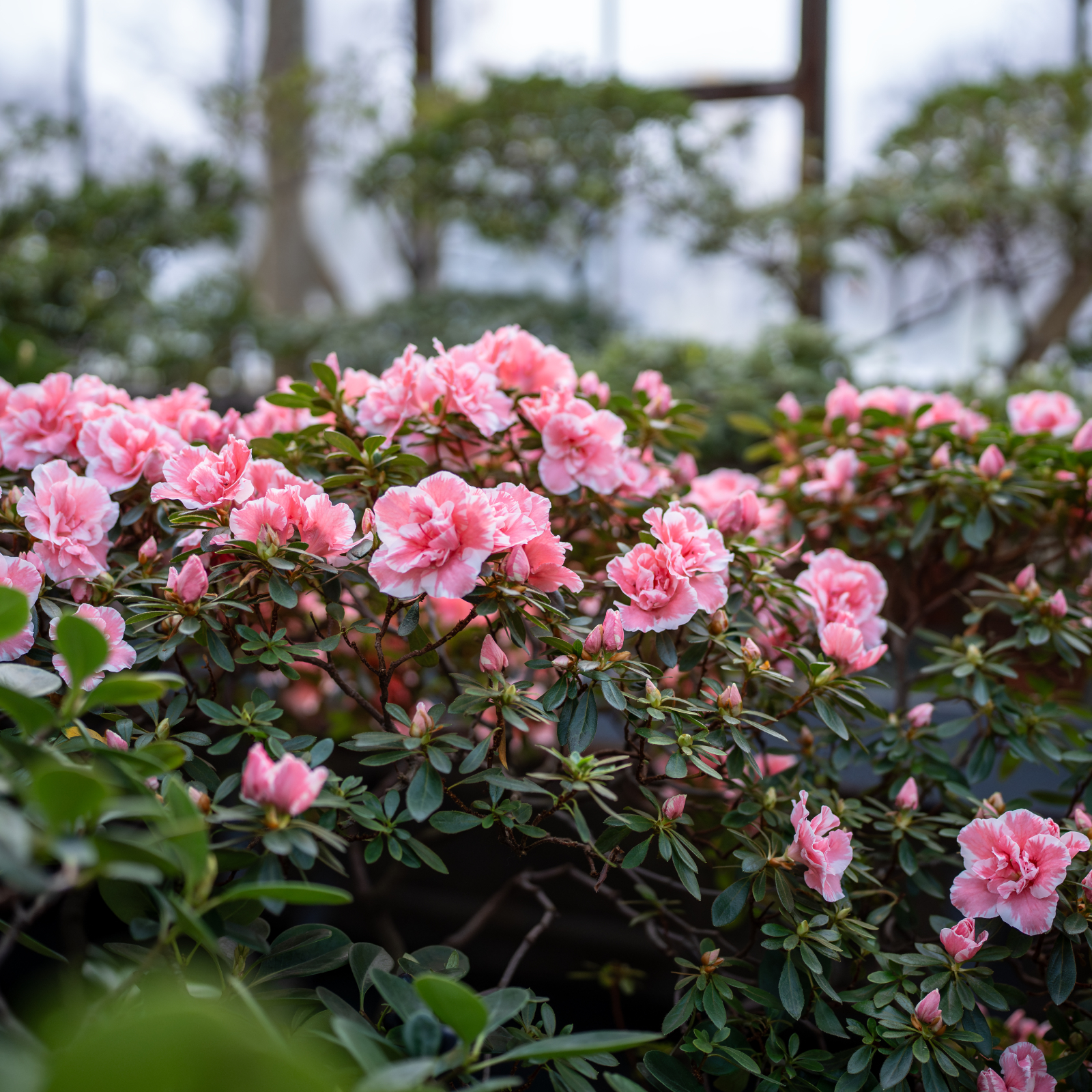 What Is The Size Of An Azalea? Explore Different Varieties That Will Suit Every Garden
What Is The Size Of An Azalea? Explore Different Varieties That Will Suit Every GardenThe size of azaleas can vary widely because they have been selectively bred for different landscape needs. Check out our picks for each size category.
By Mary Ellen Ellis
-
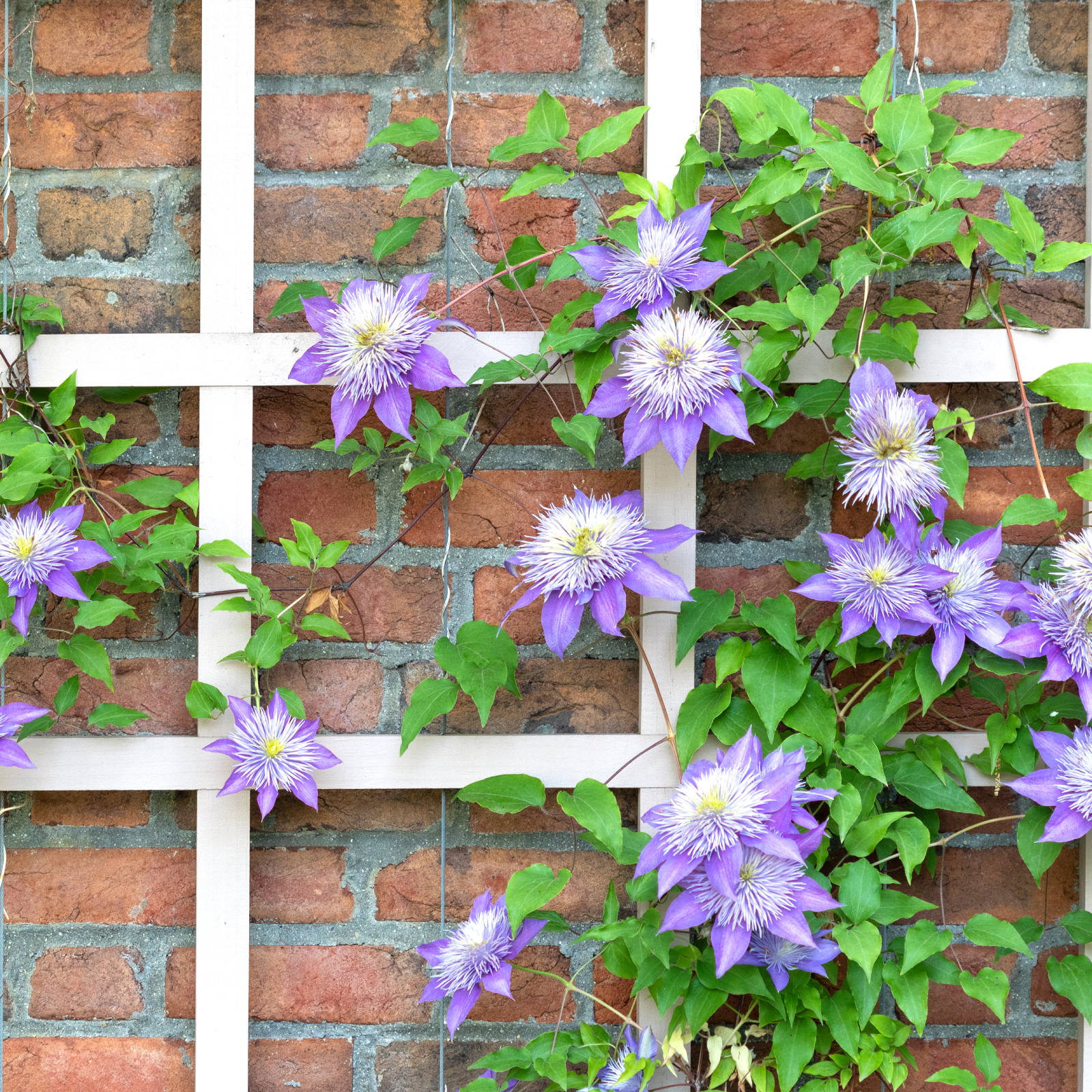 5 Fabulous Fast-Growing Vines – That Will Quickly Climb Any Arbor, Trellis, Or Fence
5 Fabulous Fast-Growing Vines – That Will Quickly Climb Any Arbor, Trellis, Or FenceThese fast growing vines are perfect for covering any eyesores in your yard or creating a living fence. They will provide great visual interest, as well.
By Amy Grant
-
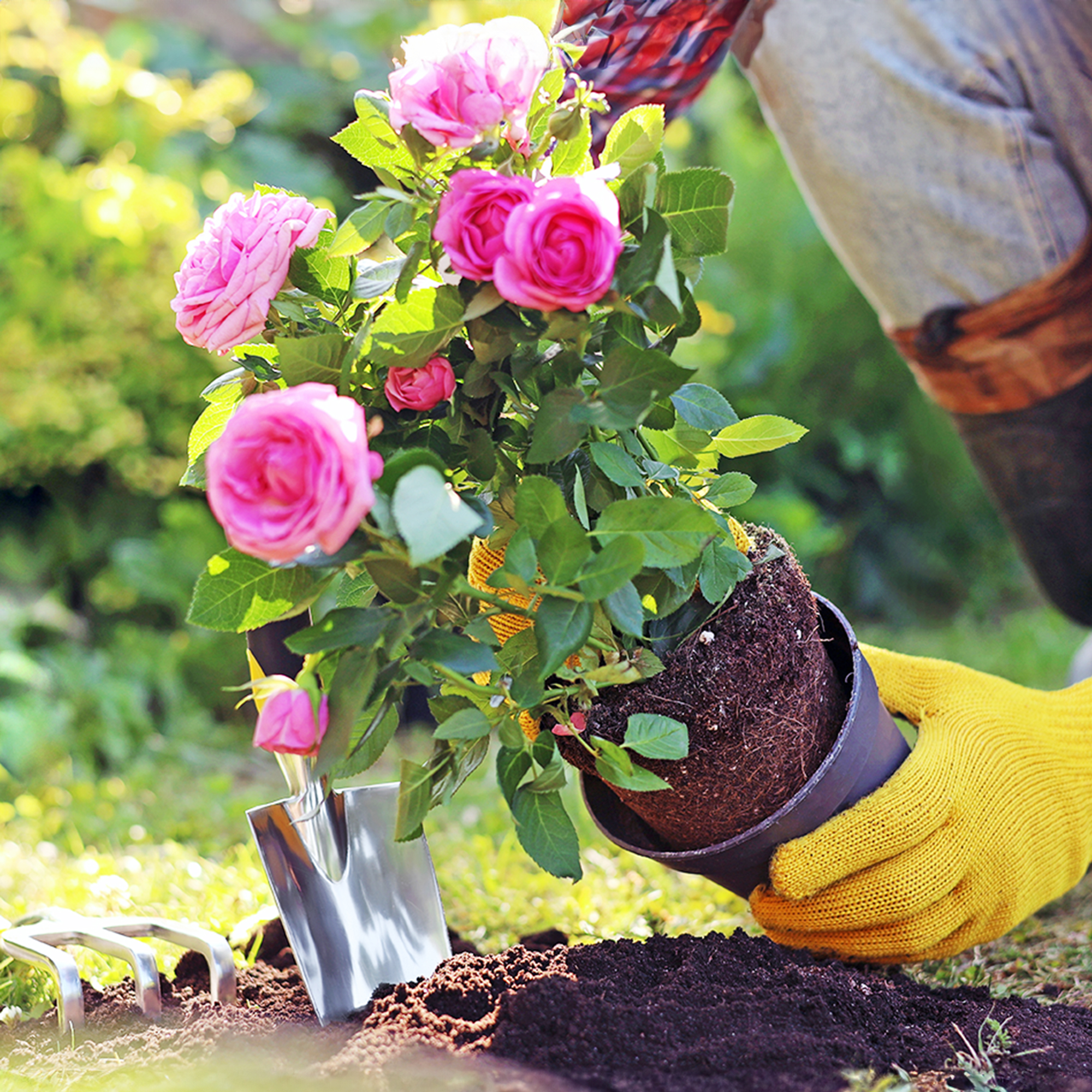 When To Plant Roses: The Best Time For Your Climate And Rose Type
When To Plant Roses: The Best Time For Your Climate And Rose TypePlant your roses at the right time and you will be rewarded with decades of glorious summer flowers – but get it wrong and you'll be crying over dead shrubs.
By Teo Spengler
-
 Spectacular Early Blooming Shrubs: 6 Sparkling Spring Flowering Bushes
Spectacular Early Blooming Shrubs: 6 Sparkling Spring Flowering BushesWant to kickstart your gardening year with dazzling spring flowering bushes for beds and borders? These unique early bloomers are sure to help you rise and shine!
By Teo Spengler
-
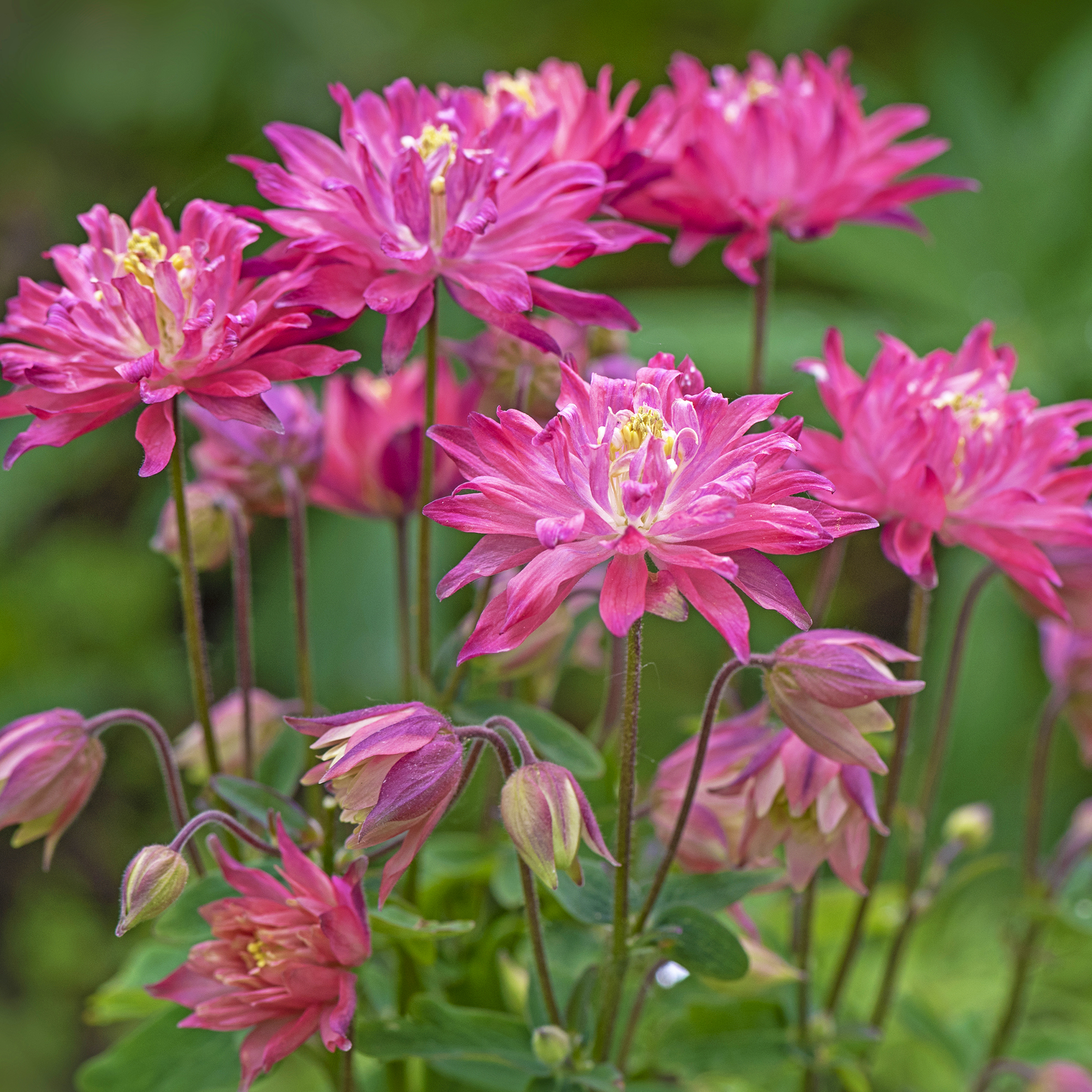 7 Shade-Loving Flowers To Start From Seed Now For A Stunning Summer Garden
7 Shade-Loving Flowers To Start From Seed Now For A Stunning Summer GardenTurn shady spots into vibrant new garden spaces with lovely and illuminating shade-loving flowers.
By Ellen Wells
-
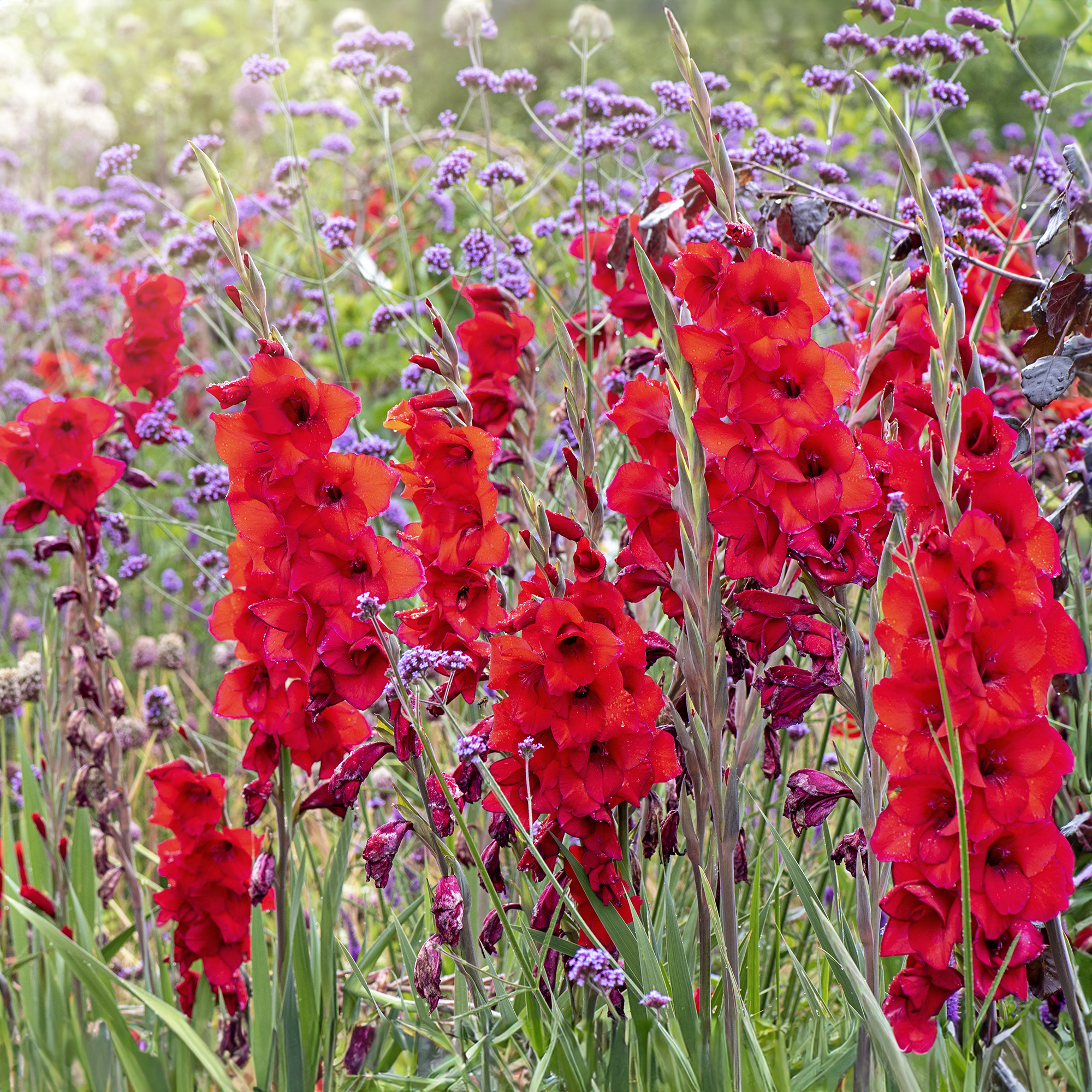 7 Summer-Blooming Bulbs To Plant In Early Spring: Don't Miss Months Of Glorious Flowers!
7 Summer-Blooming Bulbs To Plant In Early Spring: Don't Miss Months Of Glorious Flowers!Get a head start on stunning summer blooms with these easy-to-plant bulbs – act early and you will enjoy vibrant flowers that last for months on end.
By Mary Ellen Ellis
-
 Quick Fire Hydrangea – The Elegant, Easy-Care Shrub Every Gardener Needs In Their Landscape
Quick Fire Hydrangea – The Elegant, Easy-Care Shrub Every Gardener Needs In Their LandscapeIf you’re after an early flowering panicle hydrangea that offers plenty of floral variety, the Quick Fire hydrangea goes big on visual dynamics from early summer to fall
By Tonya Barnett
